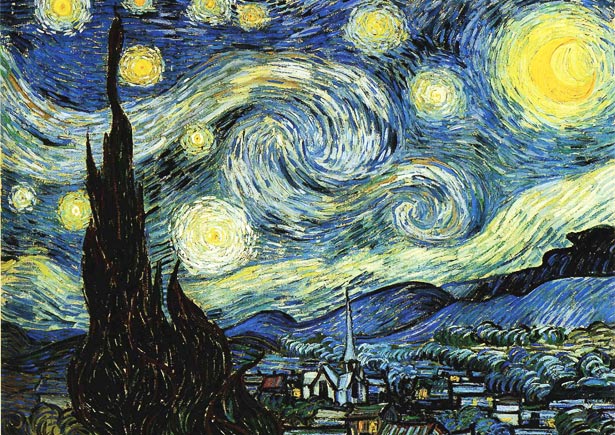 Designers, we have a problem. It seems we have forgotten how to be creative.
Designers, we have a problem. It seems we have forgotten how to be creative.
It is true, the very nature of what we do is based on creativity, however more often than not we tend to be swept away by the latest trends or “what’s hot” rather than seeking out fresh inspiration.
“A wise man makes his own decisions, an ignorant man follows public opinion.” - Chinese Proverb
There are several reasons for this creativity block in which we are suffering from and in this article I'll list some of these as well as alternatives for where to find appropriate sources of inspiration.
Direct vs. Indirect Sources of Inspiration
As designers, we are creative– we have to be. Even creative people need inspiration. So the question is, where do we look for inspiration? Herein lies the problem. If you’re like the majority of web designers, you probably depend upon direct sources of inspiration. However, more thought should be given to indirect inspiration; it is the key to developing new and original ideas.
Direct Source: Any source of inspiration that is directly associated with the graphic design field, often showcasing published design work. Examples include CSS Galleries, HOW Magazine, Graphic Design Annuals, any published design work, magazines, books, etc.

Indirect Source: Any source of inspiration that is not directly related to the graphic design field. Typically these sources can be considered “outside the box” ideas. Examples include objects in nature, art, photography, history, etc.

Using direct sources of inspiration often leads to duplication. Aside from copyright violation, attention should be given to the overuse of the so-called “web 2.0” effects (reflections, gradients, glossy interfaces, beveled edges, etc.). These effects are great indeed, but haven’t you noticed that everyone uses them. They’re not original anymore. If you frequent CSS and other design galleries, you’ll notice that many of the websites featured are very similar in concept. This is not good! However, I am not condemning such galleries, because they are useful. They are great inspiration. Wait, what? - didn’t I just say not to use them as inspiration? Well, not exactly.
The key is to let design galleries and other websites inspire you to design, not inspire your design.
Please read the above statement again. Good, now do it again.
When viewing enormous compilations of great websites, it is easy to get excited and inspired to design. You will experience designer euphoria, where your creative juices begin to flow and you feel as if you can design the world. When you reach that point, stop! Do not make the mistake of spending too much time and effort browsing through what has already been done. If so, your inspiration changes to duplication, which should never be desired.
The Nature of Business
Clients can be our best friends or our worst enemies. We have all experienced it; your client wanting to defy all of your knowledge and control the entire creative process. They see their competitors' websites and want exactly the same thing “but better”. The problem is that they have a uninformed, preconceived notion of their website and neglect to consider the many other factors in building a website.
You must educate your client so that they may understand your design decisions. Then, and only perhaps then, they will understand the value of your design.
No time for creativity on tight deadlines
If you are working in the industry for a large company or even a small business, you will always be pushed by the clock and the pocketbook. Herein lies another problem; creativity takes time and you can’t rush a good idea.
This will never change. Businesses are driven by money and we all know that time is money. However there are a few things we can do to expedite our creativity to meet these tight deadlines without hindering it. At the end of this article I have listed several creative exercises to help inspire some fresh creativity. Many of these are quick, fast-paced exercises that will likely take less time than it does to browse through a design gallery, so try them out and give them a chance. Hopefully, you will now understand that we do in fact have a problem. So, how do we fix it?
Start by getting off your computer
Finish reading this article first, then get off your computer. Your computer is not a creative machine; it does not have a brain and it cannot design for you. It is simply a tool; do not depend on it for creativity.
Please leave your computer, take a short break, tell a small white lie to the boss if you must and get out! Take your sketchbook with you. Oh yes, if you have a camera, take that too. Whether it is something specific or simply just a refreshing look on life that you discover while you’re off your computer, you can use it to inspire your creativity.
Browse Walmart or The Local Hardware Store
Stores are full of unique and interesting objects and machines. There are endless possibilities for inspiration if you know where to look. Innovation in many products can be discovered if you simply take the time to discover them. For example, take a look through the kitchen appliances section of Walmart or any other store. Really take a close and hard look at the design of these appliances, their unique shapes, their easy to use interfaces, even how they are displayed on the shelf.
There are several obvious comparisons that can be made between a website and an appliance. A blender, for example, has a unique design, some with bright colors, others with black and white. They sport elegant curves and shapes. They all have a "dashboard" of controls, cleverly designed for ease of use.
Next, venture into the paint section. It is color inspiration heaven. Paint cards are organized by color and often contain a range of shades of each color (particularly helpful for a monochromatic color scheme). Mix and match different cards, find some interesting color combinations, then stick them in your pocket and use them when you get back to the office.

Now head to the grocery aisle. Pay particular attention at how the products are arranged on the shelf. There really is an art and science to it.
Anyone can find inspiration in a store and you can do your household shopping all at the same time. How's that for multitasking?
Explore Natural Beauty
Go to a park, take a walk, wander into the woods or just simply take a blanket outside and lay on it. Whatever the method, get away from your routine. Find something that sparks your interest, catches your eye or strikes you in a particular way. Take a picture or sketch of what you see.
Of course I am not telling you to simply find a flower or tree that you like and use it directly in your design. Instead, try to figure out what it is that you find so striking, maybe it is its color or shape, or even texture. Then transfer those elements into your design. Don't be afraid to take a sample back to the office and scan it into Photoshop.
Art History
Formally trained in graphic design, I had my share of art history classes. I couldn't begin to count the times that I have used a painting or sculpture as inspiration in my design work.

Starry Night, Vincent Van Gogh, 1889
Modern art movements such as Cubism, Abstract Expressionism, and Impressionism serve as excellent sources of inspiration. Even earlier forms of art such as Roman and Greek will suffice. Painting and sculpture can be applied to web design as well. It really is all the same, it is design, whether on a canvas or on a computer screen. Artist's make color and layout choices and decide how they want the user to view their masterpiece by controlling the eye path with contrasting elements just the same as a web designer does.
Don't Forget To Use Your Imagination
I've mentioned several ways in which you as a designer can seek out new and fresh inspiration, but the most important thing you should take away from this article is to not forget to be creative and use your own imagination. Be extraordinary, not ordinary.
I challenge you to break the design cycle, explore uncharted territory and be original. Go beyond what has been mentioned in this article, seek out your own unique inspirations. Anything can inspire you if you will just let it.
Creative Exercises: Try these for your next project
Below I have listed and briefly explained some quick exercises to inspire "outside the box" thinking for your next project. Keep in mind that some of these will work for you and others may not. Don’t limit yourself to these. Think of ways to spark an idea that work for you, then share them with us in the comments section of this article.
Quick Capture Photo Session
Pick any place or area inside or out. Your desk will be a great place to start. Grab your camera and a stop watch. Give yourself 30 seconds to snap as many shots as you can of anything in the area that you have chosen. Do not concern yourself with taking a well-composed photograph- just think "rapid-fire."
Once your 30 seconds are up, upload the photos to your computer and see what you have. This exercise forces you to look at a space or area in ways in which you never have before. Browse through these photos and select a few that are particularly interesting to you; Store the others in a folder for use on another day.
Print the photos that you have selected and paste them in your sketch book. Use them on your current project or save them for another one.
Get OBJECT-ive
This is a simple one. Find an object, large or small, something you can see from all sides. Place this object in sight of your desk, or on it if possible, as you are designing and limit yourself to designing around this object.
Placing limits on a task forces creativity because it doesn't allow you to choose the expected. It it forces you to think outside the box to arrive at a solution. Freedom restricts creativity.
Webster-Mania
If you’re a strictly visual person, this one may not work for you because it involves a dictionary and words. Open up a dictionary, randomly select a word and then try to formulate ideas incorporating this word. You'd be surprised how well this works. The concept is again is based on the principle of restricting yourself from the obvious. There is nothing like restrictions to get you thinking.
Written exclusively for WDD by Michael Shelton. Michael is a freelancer web designer and runs his own website at Michaeladesigns.com
What other methods of inspiration do you use in your designs? We'd love to hear from you, please share with us in the comments' section below.















